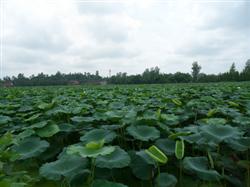Key points of management in ginger expansion period
Ginger is the most commonly used ingredient in cooking. Although ginger is very common, it has high nutritional value. It helps to promote digestion and enhance the respiratory and circulatory system of the human body. It also has a very high medicinal value, and has a very obvious effect on cholelithiasis, rheumatism and measles. At the same time, it can also relieve the pain of women during their menstrual period. Growing ginger is an OK planting project, so do you know how to manage it during the ginger expansion period? Come and have a look with the editor!

1. Fertilization
The growth and maturity period of ginger is relatively long, and the demand for nutrition is also very large, especially in the ginger expansion period, the fertilizer requirement at this stage accounts for 4% of the whole growing period. During the expansion period of ginger, topdressing should be carried out properly according to the growth rate and growth trend of ginger. Reasonable topdressing can not only promote the expansion of ginger, accelerate the growth of ginger stems and leaves, but also prevent the premature senescence of ginger due to lack of nutrition and reduce the yield.
2. Cultivate the soil
The tuber of ginger grows in the soil, so the growth of the tuber needs to be in a non-light environment, and the soil should be cultivated properly according to the soil in the process of ginger growth. It should be done at least three times, in conjunction with the soil cultivation during the first topdressing, but only need to cover the fertilizer. The last two times of soil cultivation will be completed half a month later, and finally it will be turned into a ridge, so that the tuber can not be seen with the naked eye.
3. Watering
Ginger likes water and cannot grow in a dry environment, so it needs to be watered after loosening the soil. If you encounter long-term dry weather, then you should strengthen watering management, but pay attention to the amount of water, there can not be stagnant water in the field. The expansion period is the most critical period for ginger, and the water demand will increase, so at least once a week, water should be watered when the temperature is low, and try to avoid noon.
4. Diseases and insect pests
Pest control is the most important. Ginger plague is the most common disease in the expansion period. Ginger plague can cause a devastating blow to ginger and seriously affect the yield of ginger. It is best not to continuous cropping, timely discharge of excess water in the field, prevention and control of waterlogging, found that there are diseased plants should be pulled out in time to prevent infection, carry out comprehensive disinfection of the vegetable garden, and eliminate the pathogen.
5. Harvest
Ginger harvest time is fastidious, generally ginger harvest in October 15-October 28 or so is the most suitable, of course, the harvest time is mainly based on the planting area. Harvesting in October can avoid freezing damage to ginger caused by a drop in temperature, or when the yield of ginger is high, so it is necessary to grasp the harvest time when harvesting. It should not be harvested too early and too late, otherwise it will have a certain impact on the yield and quality.
The above five points are the key points of management during the ginger expansion period, which is actually the matters needing attention during the expansion period. The expansion period is the key period to determine the yield and tuber weight, so as to effectively ensure their own economic interests. Otherwise, a year's work may be wasted. That's all for today's introduction. I hope everyone can harvest a high yield and full of pots.
- Prev

Cultivation techniques of precocious Lotus Root
According to the adaptability of lotus root to water level, it can be divided into two ecological types: shallow water lotus root and deep water lotus root. Shallow lotus root is suitable for water level of 10 cm to 20 cm, and the maximum water-resistant depth is 30 cm to 50 cm. Deep-water lotus root is suitable for water level of 30-50 cm, and the maximum water-resistant depth is 1-1.2 m. The general principle of shallow lotus root water layer management is: front shallow, medium deep,.
- Next

How to fertilize kidney beans
How to fertilize kidney beans
Related
- Where is it suitable to grow horseradish in China? it is expected to see the middle altitude horseradish in Alishan.
- How to prevent tomato virus disease reasonably? (Control methods included)
- Many people like to plant towel gourd on the balcony. What are the main points of this method and management?
- What crops can chili peppers be mixed with?
- Fertilization techniques and matters needing attention in Tomato
- What are the grafting techniques for peach seedlings in spring?
- Harm and control methods of root swelling disease of Chinese cabbage
- What are the pests of sweet potatoes? How to prevent and cure it?
- Symptoms, causes and Control methods of navel Rot in Tomato
- The cause of "Cucumber rotten bibcock" in Farmers' planting Cucumber and its Control Plan

